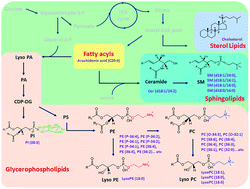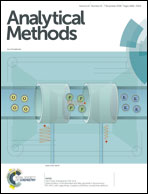Glycerophospholipids and sphingolipids correlate with poor prognostic genotypes of human papillomavirus in cervical cancer: global lipidomics analysis†
Abstract
Human papillomavirus (HPV) is an important causative factor for cervical cancer. HPV genotyping also influences the prognosis for patients undergoing concurrent chemoradiotherapy (CCRT). The presence of alpha-7 species, including HPV18, or absence of HPV infection results in poorer prognosis than that of the alpha-9 species, mainly HPV16. The poor prognostic HPV genotypes have been shown to be associated with elevated lipid signals in tumors using magnetic resonance spectroscopy, in clinical trials. We aim to investigate the detailed lipid profiles pertinent to different prognostic HPV genotypes. Global lipidomics analysis was performed on cervical tissue samples using a liquid-chromatography mass spectrometry (LC/MS) system. We identified glycerophospholipids and sphingolipids as the primary contributors for grouping. Furthermore, supported by cell experiments, we underpinned the importance of phosphocholine (PC), phosphatidylethanolamine (PE) and sphingomyelin (SM) in separating the HPV18 and HPV16 genotypes. Our results can be used to potentially develop biomarkers to improve patient stratification in personalized medicine.

- This article is part of the themed collection: Analytical Methods Recent HOT articles


 Please wait while we load your content...
Please wait while we load your content...